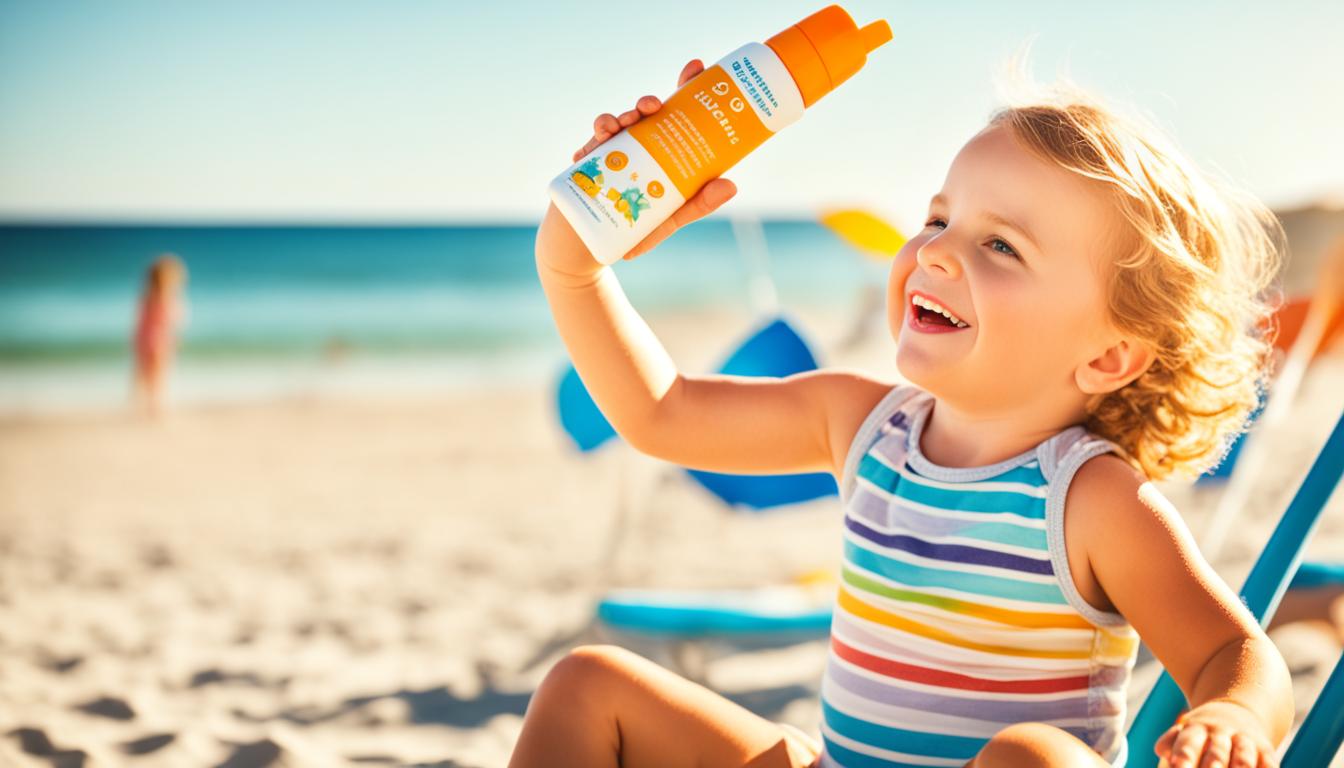You should be cautious when the UV Index reaches 6 or higher, as this indicates a high or very high risk of skin damage. During these times, protect children by limiting outdoor play, especially during peak sun hours between 10 a.m. and 4 p.m. Even on cloudy days, UV rays can harm delicate skin, so it’s important to stay vigilant. To learn more about how to keep kids safe, keep exploring these important tips.
Key Takeaways
- A UV Index of 6-7 indicates high risk, recommending protective measures before children play outside.
- UV Index levels of 8 or higher are very high or extreme, making outdoor play unsafe without strict sun protection.
- During UV Index 3-5, children should wear sunscreen and protective clothing, especially if their skin is sensitive.
- UV rays can penetrate clouds and reflect off surfaces, increasing risk even on cloudy days or in shaded areas.
- It’s safest to schedule outdoor activities during low UV periods (0-2) or early morning and late afternoon when UV levels are lower.

The UV Index is a vital tool that helps you understand the level of ultraviolet radiation reaching the Earth’s surface and how it can affect your skin and health. When you’re planning outdoor activities for your kids, checking the UV Index can guide you on when sun protection is most needed. A high UV Index indicates intense UV radiation, which increases the risk of skin damage, even during short exposures. Knowing this helps you decide whether it’s safe for your children to play outside or if you should take extra precautions. If the UV Index is low, say 0-2, the risk of skin damage is minimal, and outdoor play is generally safe with basic sun protection. But as the index climbs to moderate (3-5) or high (6-7), you should be more vigilant, especially for young, sensitive skin. During very high (8-10) or extreme (11+) levels, prolonged exposure can lead to serious skin damage, including burns and long-term risks like skin cancer. Understanding the UV radiation levels associated with different UV Index values can help you better assess the potential risks. You’ll want to prioritize sun protection measures during these high UV periods. Applying broad-spectrum sunscreen with at least SPF 30, wearing protective clothing, wide-brimmed hats, and UV-blocking sunglasses are all essential steps. For younger children, who have more delicate skin, even brief exposure without protection can cause skin damage. It’s best to schedule outdoor playtimes in the early morning or late afternoon when the UV Index is lower, especially in summer months when UV radiation peaks. Also, reminding kids to seek shade during the sun’s strongest hours helps reduce their risk of skin damage. Remember, UV rays can penetrate clouds and reflect off surfaces like water, sand, and concrete, so sun protection is necessary even on cloudy days and in shaded areas. Monitoring the UV Index isn’t just about avoiding sunburn; it’s about safeguarding your children’s long-term skin health. Repeated sun damage from UV exposure can accumulate over time, increasing their risk for skin cancers later in life. Taking proactive steps based on the UV Index ensures you’re doing your best to protect your kids from harmful UV rays while they enjoy outdoor fun. Being aware of the UV Index empowers you to make smarter choices, whether that’s applying sunscreen, adjusting playtime schedules, or ensuring they’re dressed appropriately. Ultimately, understanding when the UV Index is too high for kids to play outside helps you balance outdoor activities with their health and safety.
Frequently Asked Questions
How Does the UV Index Vary Throughout the Year?
You’ll notice that the UV index varies throughout the year due to seasonal changes and geographic differences. During summer months, the UV index tends to be higher, especially around midday, making it riskier for kids to play outside without protection. In winter, the index drops, but it can still be significant in certain locations or at higher altitudes. Always check local UV forecasts to keep kids safe from sun damage.
Can the UV Index Be Different at the Same Time Each Day?
Did you know the UV measurement can vary even at the same time each day? Yes, the UV index can differ due to weather consistency, like cloud cover or pollution, which affect UV radiation levels. So, at the same clock time, the UV index might be higher or lower depending on daily weather changes. This variability means you should check daily UV forecasts, especially if you’re planning outdoor activities for your kids.
Do Different Skin Tones React Differently to the UV Index?
You might notice that different skin tones react differently to UV exposure due to variations in UV absorption. People with darker skin have more melanin, which offers some protection by absorbing more UV rays. Conversely, lighter skin absorbs less and burns more easily. So, you should consider skin tone when evaluating outdoor safety, especially during high UV index days, to protect everyone from skin damage and long-term health risks.
How Accurate Are Daily UV Index Forecasts?
Daily UV forecast accuracy varies depending on location and weather conditions. You can generally rely on the daily prediction reliability of UV indexes, but keep in mind that sudden weather changes can affect precision. To protect your kids, check the forecast regularly, especially during peak sunlight hours, and take extra precautions if the UV index is high. Relying on trusted weather sources helps ensure you get the most accurate UV index information.
Are There Any Health Risks From Low UV Index Levels?
You might wonder if low UV index levels pose health risks. While lower UV exposure generally reduces the chance of skin damage, it doesn’t eliminate it entirely, especially if you or your kids have skin sensitivity. Prolonged exposure, even at low levels, can lead to vitamin D deficiency or skin issues. It’s best to balance sun safety with outdoor activities, wearing protection when needed and ensuring skin health.
Conclusion
Now that you know how the UV index works, you can better decide when it’s safe for your kids to play outside. Remember, it’s better to be safe than sorry—don’t let the sun catch you off guard. Keep an eye on the UV levels, especially during peak hours, so your little ones can enjoy the outdoors without unnecessary risk. When in doubt, it’s always wise to err on the side of caution and protect their skin.









